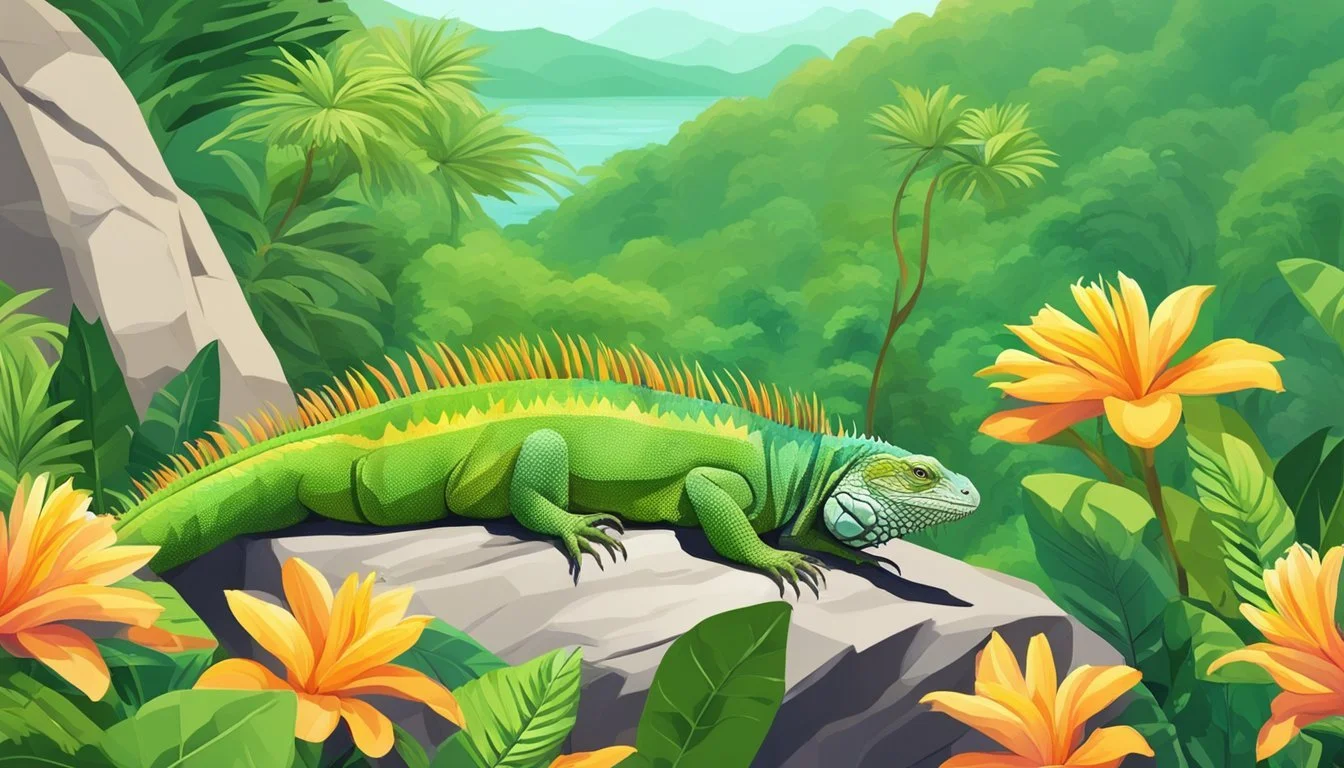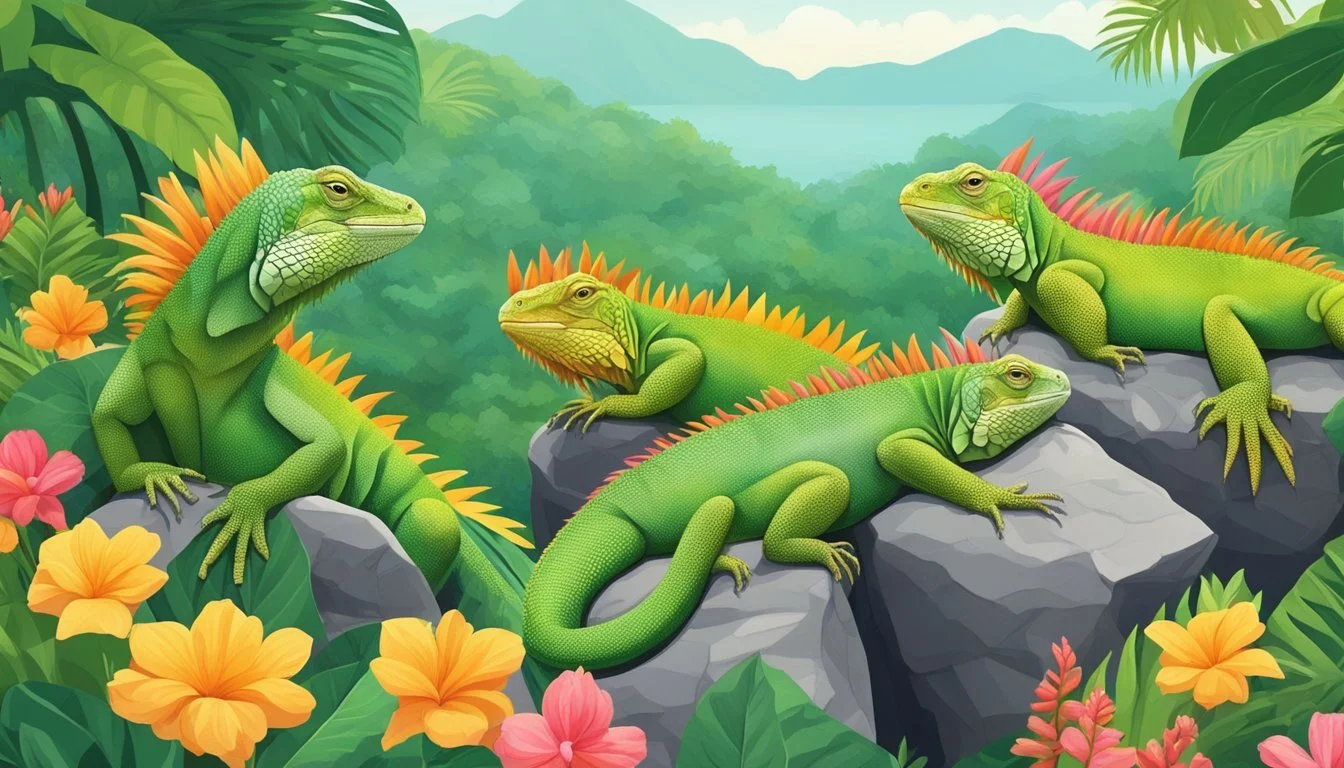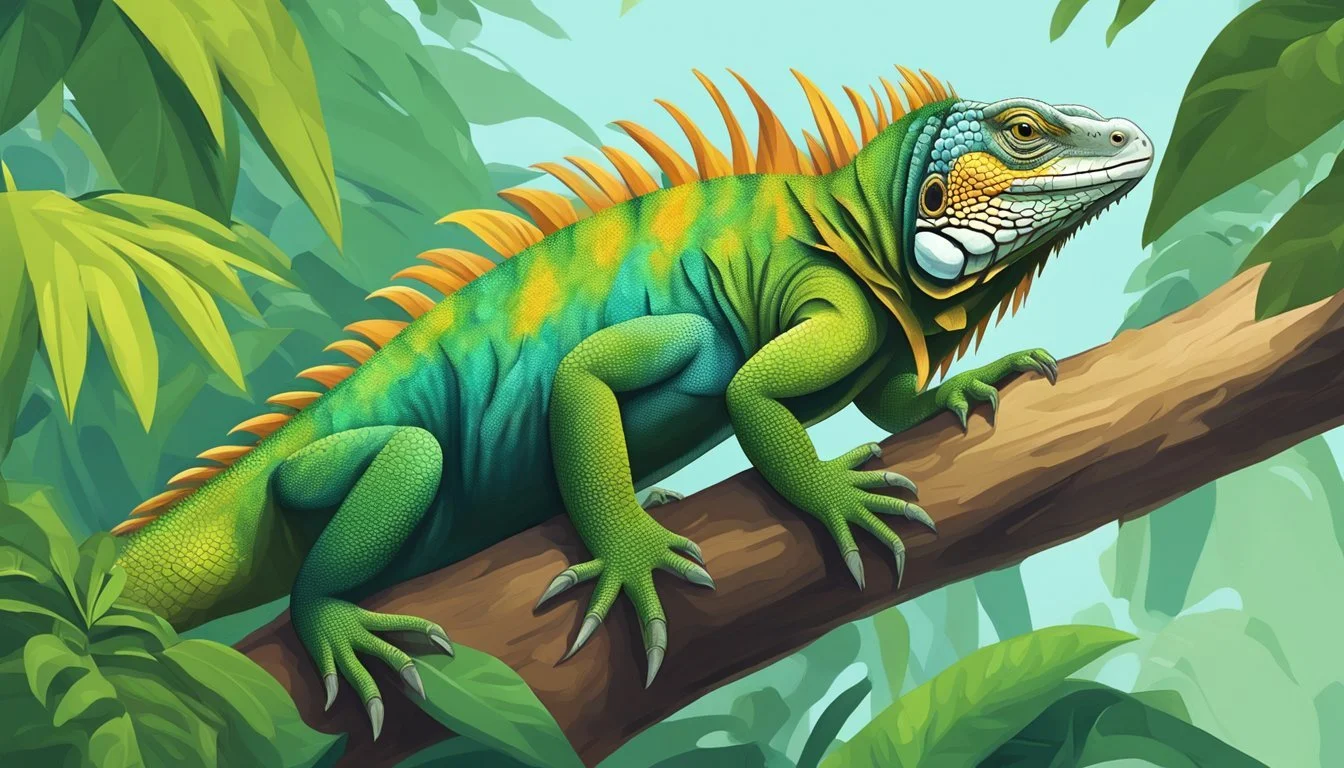Iguana Cuisine
Exploring Its Role in Central and South American Diets
Iguanas are a group of lizard species that are native to tropical areas of Central and South America. While often associated with their presence in the wild and as exotic pets, iguanas also hold a less commonly known role in the diets of the traditional cultures of these regions. For generations, various species of iguanas have been hunted and consumed as a food source. Their meat, which is high in protein and low in fat, has been a valuable nutritional staple in many rural communities.
The diet of iguanas consists predominantly of plants, making them an important part of the ecosystem as they help in seed dispersal and maintaining vegetation. In the wild, these reptiles forage for a diet rich in leafy greens, fruits, and flowers. The consumption of iguanas in Central and South American diets mirrors the creatures' own herbivorous habits, linking the sustainability of local agriculture with traditional eating practices.
Culinary traditions involving iguana meat are deeply woven into the food history of these regions. Dishes featuring iguana are prepared for special occasions and celebrated as part of cultural heritage. Despite its surprising nature to those unfamiliar with these customs, iguana meat is considered a delicacy and a part of the culinary diversity of Central and South America's gastronomic landscape.
Discovering Iguanas
In exploring iguanas as a culinary staple in Central and South America, it becomes essential to understand their biological diversity, distinctive features, and the environments in which they thrive.
Defining the Species
The genus Iguana encompasses several species, the most prevalent being the Green Iguana (Iguana iguana). Often referred to as the American iguana, these lizards are a critical component of the ecosystem and have a long-standing place in the diets of various cultures across their native regions.
Physical Characteristics
Green iguanas possess a distinct appearance, marked by:
Size: They can grow to a length of up to 6 feet from head to tail.
Tails: Their tails are long and powerful, aiding in defense and locomotion.
Colors: Typically, they appear as bright green but can vary from shades of green to brown.
Spiny-tailed iguanas, another species within the iguana family, have rows of spines running down their backs and tails.
Natural Range and Habitat
Distribution of iguanas spans a vast area:
Habitats: These lizards are arboréal, thriving in the wild regions from the Southwestern United States to Northern Argentina.
Americas: Preferring warm environments, they are commonly found in Central and South America, as well as the Caribbean.
They excel in various terrains, from rainforests to desert areas, often near water sources. Green iguanas are known for their swimming abilities, which aid in their widespread colonization and distribution across diverse habitats.
Iguanas in the Diet
Iguanas have long been a source of sustenance in Central and South America, providing vital nutrients to many diets through the consumption of various parts of their body. Their inclusion reflects not only traditional practices but also an understanding of the nutritional benefits they offer.
Historical Significance
The use of iguanas as a food source in Central and South American diets dates back to pre-Columbian times. Indigenous peoples revered the iguana, considering it a valuable food item due to its accessibility and the substantial nourishment it provided. During certain times of the year, especially during the breeding season when the iguana's meat is at its fattest, hunting these creatures became more prominent. This practice sustained communities and has been integrated into cultural traditions, which continue in some areas to this day.
Nutritional Contributions
Iguanas contribute significantly to diets in several ways, particularly due to their high protein content and presence of essential amino acids. When compared to traditional livestock, iguana meat is leaner and contains less cholesterol, making it a healthier alternative source of protein.
Vegetation in an Iguana's Diet:
Leafy Greens: Dandelion greens, mustard greens, cactus pads
Vegetables: Squash, sweet potatoes, carrots
Fruits: Mango, pears, banana, berries
Herbs: Nasturtium, hibiscus, rosemary, sage
Not only is the iguana meat itself nutritious, but iguanas consume a variety of plant-based foods that are rich in calcium and vitamins. Their herbivorous diet consists mainly of fruits, leafy greens, and other vegetables, such as squash and carrots, which provides them with ample water content in addition to nutrients. They also occasionally ingest flowers and herbs, like nasturtium and hibiscus, which may impart additional herbal benefits to their meat. The consumption of such diverse vegetation contributes to the overall nutritional profile of iguanas, making them a valuable dietary component for humans as well.
Ecological Impact
Iguanas have become pivotal to the ecological balance within their native and invasive territories, impacting both flora and fauna.
Population Dynamics
The iguana population exhibits significant growth in areas lacking natural predators, particularly in Florida where they are considered an invasive species. In the absence of control measures, wild iguana populations can experience rapid expansion, which can have a domino effect on the local ecosystems. For instance:
Central and South America: Iguanas are native to these regions and generally maintain a stable population, contributing to the ecological balance.
Florida: An exponential increase in iguana numbers has led to environmental challenges, as they compete with native species for resources.
Environmental Adaptations
Iguanas are remarkably adaptable to various environmental conditions, explaining their successful colonization of diverse habitats.
Heat Adaptation: Being cold-blooded reptiles, iguanas thrive in the rainforest regions of Central and South America, where ambient heat is plentiful.
Habitat Utilization: In Florida, iguanas have adapted to both urban and suburban settings, often being sighted in residential areas and near water bodies.
Dietary Impact: As primarily herbivorous, iguanas can affect the vegetation structure of their habitats, which may lead to further ecological changes, especially in regions where they are an invasive species.
Reproduction and Life Cycle
The reproductive cycle of iguanas is a complex process that involves distinct behaviors and physiological changes. From mating rituals to the nurturing of their young, iguanas exhibit a life cycle that contributes to their survival and diversity across their native habitats.
Breeding Behaviors
Female iguanas lay between 20 to 30 eggs in a single clutch approximately 7 to 12 weeks after mating. They exhibit a sharp increase in water intake before laying eggs, which optimizes conditions for the clutch. The selection of a nesting site is crucial; females typically dig burrows and create a specialized chamber for their eggs. The specifics of the site can affect the incubation process and consequently the survival of the hatchlings.
Growth and Maturation
The incubation period for iguana eggs is around 50 to 100 days, varying with environmental conditions like humidity. Once hatched, the life span of an iguana can range significantly from 4 to 40 years depending on the species and environmental factors. Hatchlings fend for themselves from birth, and it takes them a few years to reach sexual maturity. The physical growth during this period is crucial as iguanas develop their characteristic features like the dewlap and elongated scales along their necks.
Iguanas as Pets
Iguanas are coveted for their exotic appearance and vibrant colors, ranging from the common green iguana to the rarer blue and red species. Their care demands precision, considering their distinct needs in captivity compared to their native rainforest habitats.
Care Requirements
In terms of habitat, pet iguanas require a controlled environment that replicates their natural rainforest setting. This includes maintaining a humidity level of at least 70%. Owners can achieve this by installing a pool of water within the enclosure or using a mister. They need ample space to accommodate their potentially six-foot length as they mature.
Diet is crucial for captive iguanas. They thrive on a variety of vegetables and fruits, including but not limited to:
Vegetables: kale, carrots, broccoli, squash, and bell peppers
Fruits: mango, papaya, pears, apples, bananas, and figs
Iguanas require a balanced intake of calcium, which can be supplemented through their diet.
Space: Large enclosure
Heat: Specific temperature range
Water: Access to fresh water
UV Light: Exposure to UVA/UVB light
Diet: Vegetables, fruits, no lettuce
Avoid feeding iguanas lettuce as it lacks nutritional value and can lead to health issues.
Common Health Concerns
Metabolic bone disease is a common issue in iguanas, often due to calcium deficiency. Providing a diet rich in calcium and proper UV lighting can help prevent this. Regular veterinary check-ups are recommended to keep an eye on an iguana's health, especially since they are adept at hiding illnesses. Symptoms of health concerns can often be subtle and require a knowledgeable eye to identify.
Observing your iguana for any changes in behavior, appetite, or appearance is key in catching health problems early. Weight maintenance also plays a role in health; both over and underweight iguanas can experience significant health problems.
Conservation and Threats
Iguanas are facing significant conservation challenges due to habitat loss, invasive species, and exploitation. Understanding their endangered status and the measures being taken to protect them is crucial for their survival.
Endangered Status
Several iguana species have been recognized as critically endangered, primarily due to the impact of invasive species and habitat destruction. The Mona Rhinoceros Iguana, Anegada Rock Iguana, and Jamaican Rock Iguana are some of the species classified by the IUCN Red List of Threatened Species as facing an extremely high risk of extinction in the wild. Habitat destruction in Central and South America, as well as in regions like Florida, where they are considered invasive, contributes to their decline. The introduction of predators and competition from other iguanas, such as the Black Spiny-tailed Iguana and the Common Green Iguana, exacerbates the problem.
Protective Measures
Conservation efforts are in place to protect these vulnerable species. These measures include:
Habitat Restoration: Rehabilitating natural habitats to support healthy iguana populations.
Legislation: Enforcing laws to prevent illegal trade and poaching of iguanas.
Breeding Programs: Establishing captive breeding and release programs, particularly for species such as the Blue Iguana in the Caribbean.
Public Awareness: Educating communities on the importance of iguanas in their ecosystems and the threats they face.
Research: Studying iguana populations, their distribution, and health to inform conservation strategies.
Efforts are complicated by the distribution of invasive iguanas in areas like Florida, where they pose a threat to infrastructure and native species, and by factors like bacteria or diseases which can spread in both wild and captive populations.








